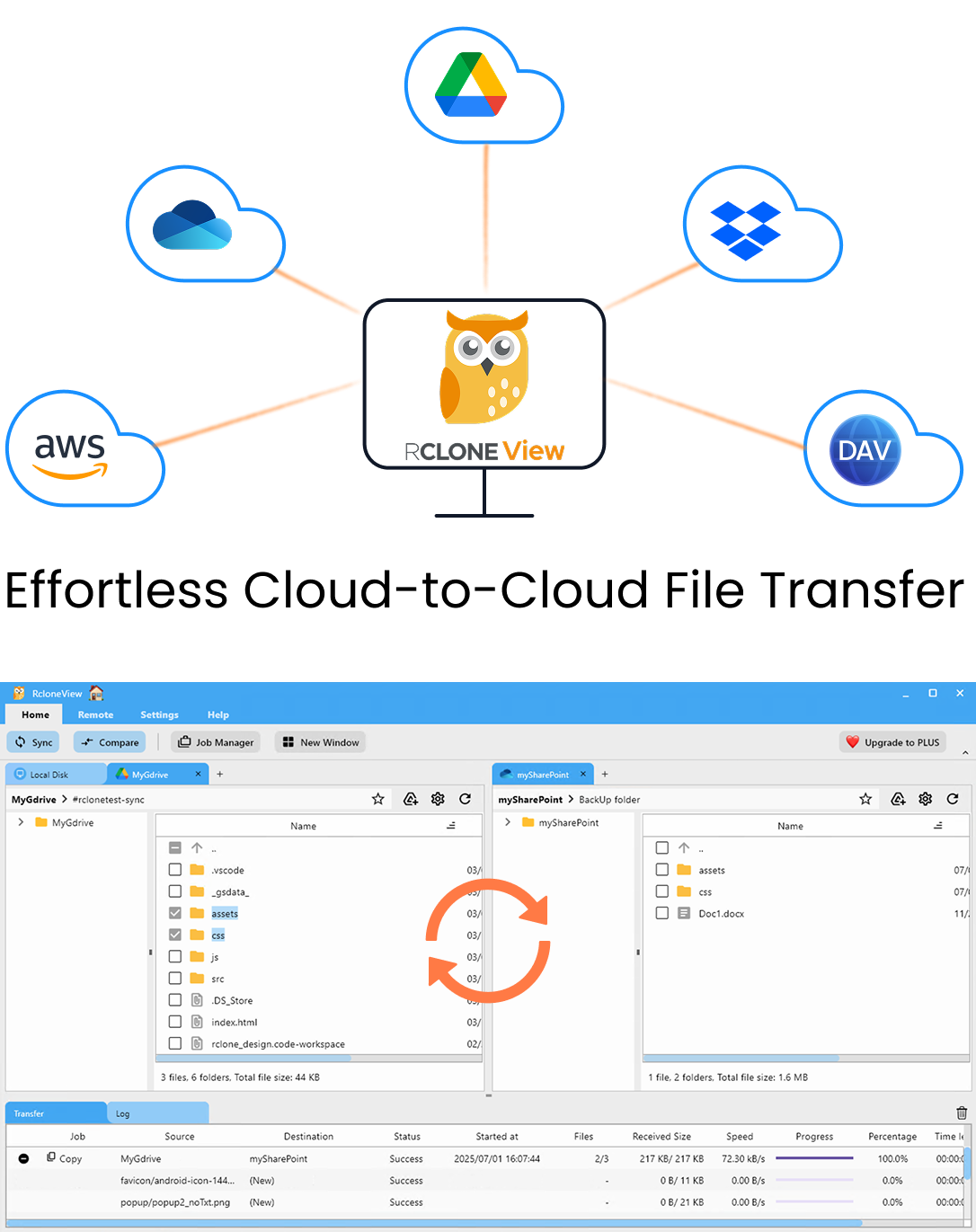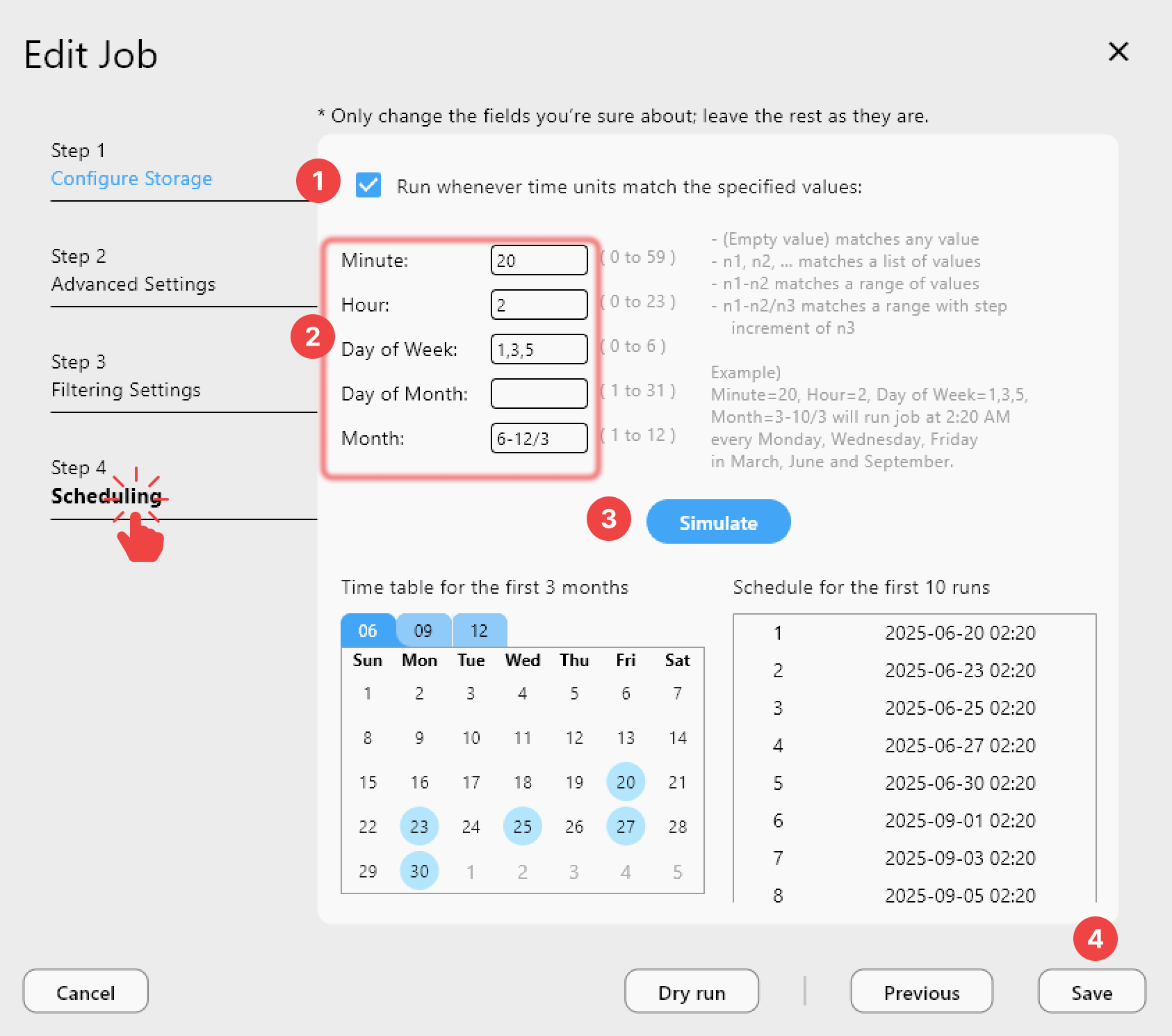Warm-Standby Disaster Recovery Across Clouds with RcloneView (S3, Wasabi, R2, OneDrive)
· 4 min read
Keep a live copy of production data in another region or cloud and switch within minutes when incidents strike.
Warm-standby DR pairs a primary location (e.g., AWS S3 or OneDrive) with a continuously updated standby (e.g., Cloudflare R2 or Wasabi). RcloneView layers a GUI over rclone so you can schedule steady syncs, validate drift with Compare, and mount the standby for rapid failover—without shell scripts.
Relevant docs
- Create Sync Jobs: https://rcloneview.com/support/howto/rcloneview-basic/create-sync-jobs
- Job Scheduling & Execution: https://rcloneview.com/support/howto/rcloneview-advanced/job-scheduling-and-execution
- Compare and Verify: https://rcloneview.com/support/tutorials/new-window-with-external-rclone
- External rclone flags (S3 & R2): https://rcloneview.com/support/tutorials/new-window-external-rclone-s3-and-r2
- Synology/NAS to cloud patterns: https://rcloneview.com/support/tutorials/synology-nas-cloud-transfer

Manage & Sync All Clouds in One Place
RcloneView is a cross-platform GUI for rclone. Compare folders, transfer or sync files, and automate multi-cloud workflows with a clean, visual interface.
- One-click jobs: Copy · Sync · Compare
- Schedulers & history for reliable automation
- Works with Google Drive, OneDrive, Dropbox, S3, WebDAV, SFTP and more
WindowsmacOSLinux
Get Started Free →Free core features. Plus automations available.
Why warm-standby with RcloneView
- Faster recovery: Standby copies are within minutes/hours of primary, not days.
- Cloud choice: Mix S3, Wasabi, R2, B2, Google Drive, Dropbox, or OneDrive.
- No scripts: Build jobs in a wizard, not YAML/cron.
- Visible drift: Compare highlights mismatches before you need to fail over.
- Safer restores: Mount the standby and copy back without touching production.
Strategy and architecture
[Primary cloud/local/NAS] --(RcloneView scheduled Sync)--> [Standby cloud/region]
\
--(Weekly Compare)--> [Drift report]
- Primary: where apps write (S3 bucket, OneDrive site, GDrive workspace, NAS).
- Standby: another region/provider with versioning (R2/Wasabi/S3/B2).
- Control: RcloneView runs sync on intervals; Compare checks integrity; Mount enables rapid access during failover.
Prerequisites
- Two remotes configured in RcloneView (e.g.,
s3:prod-bucketandr2:standby-bucket). - Versioning enabled on the standby for rollback safety.
- IAM/API permissions for list/read/write on both sides.
- Bandwidth window for scheduled replication (nightly or hourly).
Step 1: Build the baseline sync job
- Create a Sync job: Source = primary, Destination = standby.
- Use one-way Sync to mirror new/updated files; keep deletes if you want strict parity.
- Add filters for noisy paths (e.g., cache/temp).
- Optional performance flags (Advanced Options):
--s3-chunk-size=64M --s3-upload-concurrency=8 --checkers=8 --transfers=8
- Save the job so the same settings apply to every run.
Step 2: Schedule continuous updates
- Open Scheduler > select the DR job.
- Choose cadence: hourly for app data, nightly for archives.
- Enable retries/backoff for flaky links.
- Turn on logging so you can prove RPO compliance.
- Add a second scheduled Compare weekly to detect drift early.

Step 3: Verify and monitor
- Use Compare to ensure object counts and checksums match.
- In logs, watch for throttling; tune
--s3-upload-concurrencyif needed. - Keep versioning on the standby so accidental deletes can be recovered.
Step 4: Failover playbook
- Mount the standby: Mount destination remote to a path your app can read.
- Point workloads to the mounted path or to the standby bucket endpoint.
- Keep the primary in read-only or offline until incident triage is done.
- Run a one-time Copy back to primary when it is healthy; disable delete flags during the return to avoid data loss.
--dry-run --checksum --no-traverse # verify before cutover
Tuning tips
- Latency-sensitive apps: lower chunk size and concurrency; schedule during low traffic.
- Compliance: pair with Object Lock (see immutable guide) to block ransomware deletes.
- Cost control: exclude staging/temp folders and enable lifecycle policies after retention windows.
- Multi-cloud: keep two standbys (e.g., R2 + Wasabi) from the same primary using separate jobs.
Troubleshooting checklist
- Slow replications: reduce
--transfersand enable bandwidth limits; check peering to standby region. - Mismatched counts: rerun Compare with
--checksum; confirm both remotes use versioning. - Permission errors: ensure API keys allow multipart uploads and listing on both clouds.
- Restore deletes data: use Copy (not Sync) when bringing data back to production.
Quick-start template
Job: Warm-Standby Sync (S3 -> R2)
Source: s3:prod-app-data
Destination: r2:dr-standby
Flags:
--s3-chunk-size=64M
--s3-upload-concurrency=8
--checkers=8
--transfers=8
Schedule: Hourly at :15 with 2 retries (10m backoff)
Verification: Weekly Compare + email notification on mismatch
Failover: Mount r2:dr-standby and point workloads to the mount
Keep your standby warm, tested, and ready so failover is a switch—not a scramble.